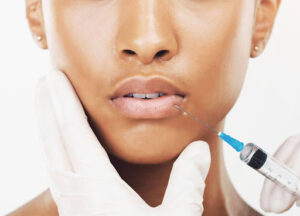Rhinoplasty, commonly known as a nose job, is a transformative surgical procedure that can enhance both the form and function of your nose. However, like any surgery, it comes with a period of recovery, which includes managing post-operative swelling. After the removal of the cast, you might notice persistent swelling that can take some time to fully subside.
In this blog, we share effective strategies and tips on how to reduce swelling after rhinoplasty cast removal. From proper aftercare routines to lifestyle adjustments, we guide you through the best practices to ensure a smoother and more comfortable recovery process. Whether you are about to undergo rhinoplasty or are in the midst of your healing journey, these insights will help you achieve optimal results and a quicker return to your daily activities.
How Long Does Swelling Last After Rhinoplasty Cast Removal?
Swelling after rhinoplasty cast removal can vary significantly depending on individual factors, but typically, the most noticeable swelling subsides within a few weeks. However, subtle swelling, especially around the nasal bones and nasal skin, can persist for several months, with the full recovery time often extending up to a year.
During this period, the nose shape continues to refine as the swelling decreases and the tissues settle into their new position. It’s important to follow your surgeon’s post-operative care instructions to help manage swelling and ensure the best possible outcome.
Schedule a rhinoplasty consultation
Rhinoplasty Recovery Process: Proper Care After Nasal Cast Removal
After the nasal cast is removed, swelling is expected. The extent of swelling varies among rhinoplasty patients, influenced by factors such as the surgical technique, individual healing response, and the care measures taken post-operatively. It’s essential to follow your surgeon’s detailed instructions to ensure a successful rhinoplasty recovery.
Use of Ice Packs
Applying ice packs for 10-20 minutes at a time can significantly reduce swelling. Make sure to wrap the ice pack in a cloth to avoid direct contact with the skin, which can cause frostbite.
Managing Swelling and Discomfort
- First Week After Surgery: In the first week after surgery, swelling and bruising are most pronounced. Keeping the head elevated, even while sleeping, using extra pillows or an airplane neck pillow, can help reduce swelling. It’s also important to avoid hot showers, as they can increase blood flow and worsen swelling.
- 2-3 Weeks After Surgery: Swelling begins to subside during this period. Continue to avoid strenuous activities and physical exertion, which can increase blood pressure and lead to additional swelling. Gentle saline nasal sprays can help keep nasal passages clear and promote healing.
- 3-4 Weeks After Surgery: By the 3-4 week mark, a dramatic reduction in swelling should be noticeable. It’s a good time to start incorporating moderate exercise back into your routine, but always consult your surgeon before resuming any strenuous exercise or normal activities.
Long-Term Swelling Reduction and Healing
- Months After Surgery: Full recovery after rhinoplasty can take several months. Residual swelling, especially at the nasal tip and bridge, may persist for up to 12-18 months. During this time, maintaining a healthy lifestyle with plenty of water, a balanced diet, and avoiding blood-thinning medications can support the natural healing process.
- Complete Recovery: The complete recovery period can extend to a year or more. It’s essential to attend all follow-up appointments and adhere to your surgeon’s care instructions to monitor healing and address any concerns promptly.
How long does swelling in the tip last after a rhinoplasty?
Caring for Your Nose After Cast Removal: Tips for Managing Swelling and Promoting Healing
Keep Your Head Elevated
Maintaining an elevated position, particularly during sleep, is crucial for reducing blood flow to the nose and minimizing swelling. This can be achieved by using 4-5 pillows to prop yourself up comfortably. Elevating the head helps to prevent fluid accumulation around the nasal tissues, which can exacerbate swelling and delay healing.
Hydration and Diet
Proper hydration is essential for promoting healing and reducing water retention. Drinking plenty of water throughout the day helps flush out toxins from the body and supports the body’s natural healing processes. In addition to hydration, maintaining a balanced diet is important. A diet rich in fruits, vegetables, and lean proteins provides essential nutrients that aid in tissue repair and overall health. Avoiding excessive salt intake can also help minimize fluid retention, which contributes to swelling.
Avoid Strenuous Activities
It’s important to avoid strenuous activities and contact sports for at least 4-6 weeks post-surgery. Activities that increase blood pressure and heart rate can lead to increased swelling and potential complications. Instead, focus on light activities as recommended by your surgeon. Gradually reintroduce normal physical activities based on your individual recovery progress.
Use of Medications
Certain medications can be beneficial in managing symptoms like nasal congestion post-rhinoplasty. Over-the-counter antihistamines, for example, can help alleviate congestion and reduce swelling in the nasal passages. However, it’s essential to consult your surgeon before taking any new medications after surgery. He can provide specific recommendations based on your medical history and individual needs, ensuring that medications do not interfere with your recovery process or cause adverse effects.
Additional Tips for Swelling Management
- Cold Compresses: Applying cold compresses or ice packs to the cheeks and eyes (avoiding direct contact with the nose) in the first few days after surgery can help reduce swelling and alleviate discomfort.
- Nasal Saline Sprays: Using saline nasal sprays can keep nasal passages moist and aid in clearing out mucus and debris, promoting faster healing.
- Follow-up Care: Attend all scheduled follow-up appointments with your surgeon to monitor healing progress and address any concerns promptly.
By following these comprehensive tips and adhering to your surgeon’s post-operative instructions, you can effectively manage swelling, support healing, and achieve optimal results. Always prioritize open communication with the healthcare team to ensure a smooth and successful recovery experience.
How long is recovery from rhinoplasty?
Handling Complications After Rhinoplasty Surgery: When to Seek Help
Handling complications after rhinoplasty requires vigilance and prompt action to ensure optimal recovery. While complications are rare, it’s essential to recognize warning signs and seek medical help when necessary:
Recognizing Complications
- Excessive Pain: While some discomfort is normal, severe or increasing pain can indicate complications such as infection or excessive swelling.
- Severe Swelling or Bruising: Significant swelling or bruising that worsens instead of improving could indicate issues like hematoma (collection of blood) or fluid retention.
- Difficulty Breathing: Any difficulty breathing, especially if it worsens over time, requires immediate attention as it could indicate nasal obstruction or other respiratory issues.
- Persistent Bleeding: While some oozing is common initially, persistent or heavy bleeding after the first few days post-surgery may signal complications.
- Fever: A fever above 100.4°F (38°C) can indicate infection and should be reported to your surgeon promptly.
- Unexpected Changes: Sudden changes in nasal shape, asymmetry, or skin color should be evaluated by your surgeon to rule out complications.
When to Seek Help
- Contact Your Surgeon: If you experience any of the above symptoms or have concerns about your recovery, contact your surgeon immediately. Prompt communication can help address issues early and prevent complications from worsening.
- Emergency Situations: In case of severe pain, difficulty breathing, or excessive bleeding that cannot be controlled with gentle pressure, seek emergency medical care.
- Follow-up Appointments: Attend all scheduled follow-up appointments with your surgeon as they are crucial for monitoring your healing progress and addressing any complications early on.
Handling complications after rhinoplasty requires proactive monitoring and prompt communication with your healthcare team. By staying vigilant and seeking timely medical assistance when needed, you can ensure a safe and successful recovery from your rhinoplasty procedure. Your surgeon is your best resource for personalized guidance and support throughout the healing process!
Rhinoplasty Services in Montreal
Whether you’re considering non-surgical enhancements or surgical procedures, the experienced team at Clinique Face MD is here to help you achieve your aesthetic goals. We offer a comprehensive range of services under one roof, ensuring you receive high standards of care and achieve a new look with confidence. Contact us today at (514) 447-9435 to schedule a personalized consultation!





